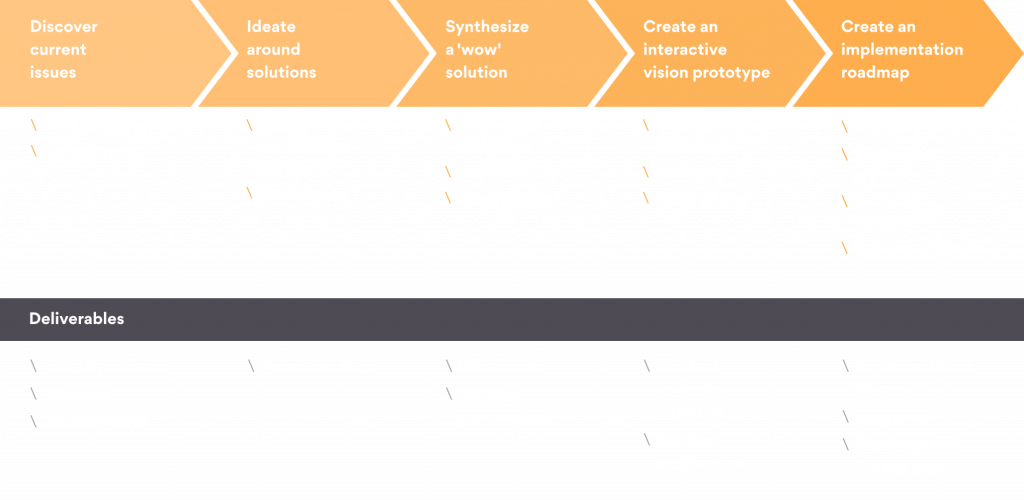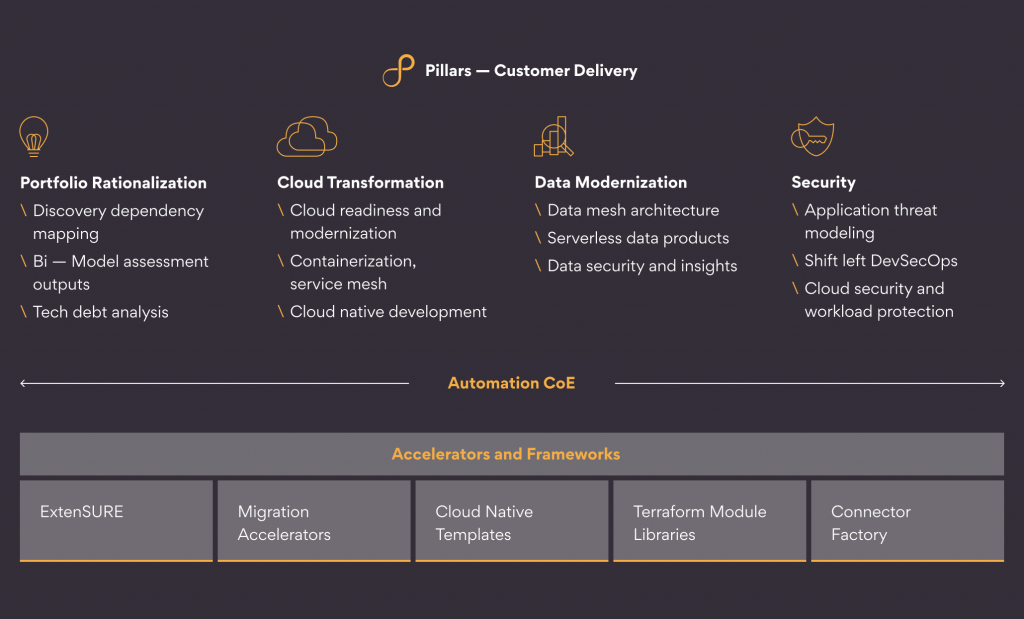Over the last decade or more, the world’s fastest-growing businesses have fallen into one of two groups:
- They create and/or distribute digital products and services using digital channels (think social media platforms and streaming and online banking services)
- They create and/or distribute physical products and services using digital channels (think Amazon, Tesla, and Airbnb)
So it’s no surprise that nearly 75% of 110 CEOs surveyed said they are “undergoing or preparing for digital transformation” in their organizations. But as these executive-led digital transformation initiatives work their way down through an organization, another buzzword is also working its way up: modernization.
What’s the difference? While these two terms are being used interchangeably in some cases, they couldn’t be more different, using different methods and tools to deliver significantly different business outcomes. Let’s break them both down in turn.
Digital transformation in theory and practice
Digital transformation relies on digital technologies to dramatically improve how your organization meets the changing needs of your customers, pursues new markets, adapts to market conditions, or improves process efficiencies.
Netflix is a clear example of digital transformation at work. The company took advantage of the widespread adoption of broadband wireless networks to shift away from sending physical DVDs to subscribers in the mail and towards on-demand streaming of content at nearly the same audio and video quality as the physical DVD could offer.
Their goal was the same: delivering entertainment to customers. But how it met the market need was digitally transformed, creating a far superior customer experience along with a more efficient and cost-effective distribution model for Netflix.
The banking industry is another example. When was the last time you stood in line at a branch to deposit a physical check? That same action has been entirely replaced by the ability to take a photo of the check and texting it to your bank for a timely deposit.
Any bank that still required its customers to queue in-person to make a deposit would quickly find itself out of business in a growing universe of fintech startups, challenger banks, neobanks, and more.
The how of digital transformation
Digital transformation fundamentally re-imagines an organization’s core business model, target markets, go-to-market approaches, and/or internal processes in an effort to deliver sustainable breakthrough results like profitable growth and increased market share or capitalization.
However, it’s difficult to work on your business and identify and successfully execute digital transformation opportunities when you’re consumed by working in your business and meeting the daily needs of your customers.
Which is why many enterprises partner with trusted digital transformation advisors like Persistent Systems, who offer:
- Deep vertical experience transforming complex processes
- Consulting and solutions expertise to define the transformation opportunity properly
- The global development horsepower and scale needed to bring those transformations to life for large-scale, complex transformation initiatives
Here’s how we lay the foundation for a successful digital transformation:

Modernization in theory and practice
Modernization, on the other hand, is all about applying the latest technologies, methodologies, and models—including cloud, agile, automation, and containerization—to an organization’s legacy IT infrastructure, architecture, and products to maximize resiliency, efficiency, agility, and speed.
It’s easy to see why the two terms might be used interchangeably, but there’s a key difference.
While modernization shares some of the key benefits of digital transformation, the key difference lies in the span of influence within the enterprise.
Modernization enhances the performance of existing products and systems without changing the business operating model, while digital transformation fundamentally improves the business operating model itself.
Here are a few of the most common drivers of modernization from our perspective:

The how of modernization
Businesses that engage Persistent Systems for modernization initiatives leverage the same capabilities as digital transformation partners but with a focused approach crafted to maximize the benefits of modernization, built around four key pillars:

Digital transformation and modernization are similar-sounding approaches with similar-sounding benefits to similar sounding problems. Both can deliver streamlined processes, new efficiencies, and automated productivity.
However, digital transformation is about driving the evolution and creation of new business models, while modernization is focused on preparing your infrastructure, technology, and products to succeed in a fast-changing, digitally driven world.
To learn how Persistent Systems can put 30+ years of business acceleration and transformation experience to successfully transform or modernize your business, visit our Digital Transformation, Product Modernization and IT Modernization web pages.






